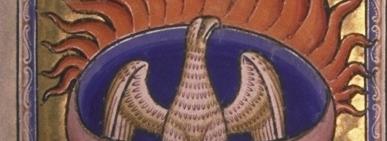
Carl Gustav Jung
July 26, 1875 - June 6, 1961
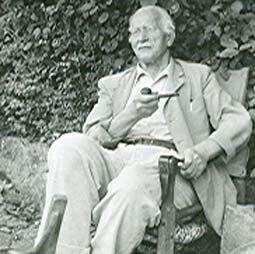
C.G. Jung at his Tower Retreat
Bollingen, Switzerland
About Jung
I
Carl Gustav Jung, Swiss psychiatrist and founder of analytical psychology, was born in Kesswil on Lake Constance, in 1875. His family moved to Laufen by the Rhine falls when he was six months old. He was the oldest child, and had one sister, Gertrud. His father, Paul Jung, was a pastor in the Swiss Reformed Church. His youth was marked by vivid dreams, intense religious questioning and extensive reading. From 1895, he studied medicine at the University of Basel, where he engaged in extensive extracurricular reading in philosophy, theology, spiritualism and psychical research, and participated in seances. After his medical studies, he took up a post as an assistant physician at Burghölzli hospital at the end of 1900. In 1902, Jung became engaged to Emma Rauschenbach, whom he married and with whom he had five children.
His early experimental work on word associations established his reputation as one of the rising stars of European psychiatry, and together with Eugen Bleuler, he played an important role in establishing the modern diagnostic category of schizophrenia. Jung became a lecturer at the University of Zürich, and in 1909, gained an honorary degree from Clark University. In 1906, he commenced a collaboration with Freud and played a critical role in launching the international psychoanalytic movement – organising its first congress, editing its first journal, and becoming the first president of its international association. In 1909, he left the Burghölzli, to devote himself to his burgeoning private practice and independent research. In 1914, he withdrew from the psychoanalytic movement, and resigned from the University of Zürich.
By the outbreak of the First World War, Jung had played a critical role in the institutional development of psychoanalysis and made critical interlinked contributions to the development of psychical research, dynamic psychiatry, psychological testing, psychotherapy, cultural psychology, and the psychology of personality. However, it was from that time onwards that his most distinctive work took shape.
In 1913, Jung had a series of apocalyptic visions. Struck by the correspondence between these and the subsequent onset of the war, Jung engaged in a process of self-experimentation which he termed his ‘confrontation with the unconscious.’ At the heart of this project was Jung’s attempt to get to know his own ‘myth’ as a solution to the mythless predicament of secular modernity. This took the form of provoking an extended series of waking fantasies in himself. He later called this the method of ‘active imagination.’ Jung elaborated, illustrated and commented on these fantasies in a work which he called The Red Book, which was at the centre of his later work. In his practice at this time, Jung encouraged his patients to undertake similar forms of self-investigation. His adoption of nonverbal techniques in psychotherapy was to play an important role in the rise of art therapies.
Jung maintained that his fantasies and those of his patients stemmed from the mythopoetic imagination which was missing in the present rational age. Reconnecting with this could form the basis for cultural renewal. The task of moderns was one of establishing a dialogue with the contents of the collective unconscious and integrating them into consciousness. This was to play an important part in a popular ‘mythic revival.’ He maintained that cultural renewal could only come about through self-regeneration of the individual. He termed this the ‘individuation process’, which was an account of the higher development of the personality. Consequently, for Jung, psychotherapy was no longer a process solely preoccupied with the treatment of psychopathology. It became a practice to enable the higher development of the individual through fostering the individuation process. This became the focus of Jung’s later work. In his scholarly writings, he undertook a comparative historical study of the individuation process in various cultures and epochs. Conceived as the normative pattern of human development, it was to form the basis of a general scientific psychology.
From the 1920s onwards, Jung embarked upon the psychology of religion, taking his cue from the psychology of religions movement, and in particular, from the work of William James and Théodore Flournoy. He attempted to develop a comparative psychology of the religious-making process. Rather than proclaiming a new prophetic revelation, his interest lay in the psychology of religious experiences. The task was one of studying the translation and transposition of the numinous experience of individuals into symbols, and eventually into the dogmas and creeds of organised religions, and finally, to study the psychological function of such symbols. Jung maintained that such a psychology of religion could in turn revivify Christianity, through explicating the living meaning of its symbolism and practices.
Jung engaged in the comparative study of, among others, Buddhist, Hindu and Taoist practices of personality development. His studies of Eastern thought played an important role in mediating and introducing Eastern esoteric practices and conceptions to the West, and bringing the work of contemporary Indologists and Sinologists to a wider audience. He devoted particular attention to the study of medieval alchemy. In the 19th century, figures such as Mary Atwood and Ethan Allen Hitchcock had argued that the chemical language and images of alchemy were simply an exoteric device covering the esoteric moral and spiritual purposes of alchemy. From around 1912 onwards, Théodore Flournoy and Herbert Silberer developed this into a psychological interpretation of alchemy. From the 1930s, Jung embarked on an extensive study of alchemy. His understanding of it was based on two main theses: first, that in meditating on the texts and materials in their laboratories, the alchemists were actually practising a form of active imagination. Second, that the symbolism in the alchemical texts corresponded to that of the individuation process which Jung and his patients had been engaged with. He maintained that the alchemical tradition had functioned as historical compensation for the one-sidedness of Christianity, and its study could provide what was lacking in the later. As well as providing a psychological study of religious and cultural history, Jung’s alchemical works functioned as an allegorical presentation of his own work. Rather than write directly of his experiences and those of his patients, he commented on analogous developments in esoteric practises.
From the 1920s onwards, a large international movement grew around Jung, and Jungian psychotherapy trainings began to be formalised in the 1940s, and spread throughout the world. Jung’s readership was widespread and extensive, particularly in the English-speaking world, and his works played an important part in the rise of the new age and alternate religions movement. He died in 1961, leaving a vast corpus of manuscripts and correspondences which is only partially published.
© Sonu Shamdasani
Professor Shamdasani is the General Editor and Co-founder of the Philemon Foundation. He is Philemon Professor in Jung History at the Centre for the History of Psychological Disciplines at Oxford University. A historian of psychology and psychiatry, his research follows two intersecting verticies: the reconstruction of the formation of modern psychological disciplines and therapeutics from the mid-nineteenth century onwards, and a reconstruction of the formation of work of Jung, based on primary archival materials.
He is also the author of Cult Fictions: C.G. Jung and the Founding of Analytical Psychology (Routledge, 1998), Jung and the Making of Modern Psychology: The Dream of a Science (Cambridge University Press, 2003), Jung Stripped Bare by his Biographers, Even (Karnac, 2005), C.G. Jung: A Biography in Books (Philemon Series, Norton, 2012), and (with Mikkel Borch-Jacobsen) The Freud Files: An Inquiry into the History of Psychoanaysis (Cambridge University Press, 2012), as well as, the editor and co-translator of C. G. Jung’s The Red Book: Liber Novus (Norton, 2009), and the editor of C. G. Jung’s, The Psychology of Kundalini Yoga, (Bollingen Series, Princeton University Press, 1996); Michael Fordham, Analyst-Patient Interaction: Collected Papers on Technique (Routledge, 1996); Théodore Flournoy, From India to the Planet Mars: A Case of Multiple Personality with Imaginary Languages (Princeton University Press, 1994) and (with Michael Munchow), Speculations after Freud, Philosophy, Psychoanalysis and Culture (Routledge, 1994).
Carl Gustav Jung was born in Kesswil, Switzerland on July 26, 1875. He was the only son and eldest child, with one much younger sister. His father was a pastor in the Swiss Reformed Church, and his mother came from a family of clergymen. From the time of his early youth, Jung was captivated by his dreams and inner life. This led him to embark on a journey of self-discovery, in which he questioned the beliefs of the Protestant tradition in which he had been steeped.
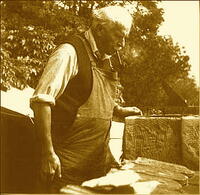
In 1906 Jung began a correspondence with Sigmund Freud that blossomed into a friendship. Though they came from different intellectual backgrounds and were almost a generation apart in ages, they none-the-less shared an interest in grounding psychology in an in-depth exploration of the individual’s life. They also emphasized the role of the unconscious in the individual’s relationship to the inner and outer worlds. Freud termed this approach psychoanalysis. When Jung embarked on an independent direction from Freud, he called his approach analytical psychology. Jung left the Burgholzli in 1909 to devote himself to his private practice and to the study of collective expressions of the unconscious, such as mythology, folklore and religion.
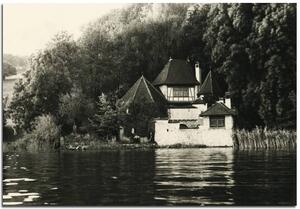
He compared these products of the collective unconscious and subjected them to analytic understanding. He later named this comparative method amplification. Amplification is a means of enlarging the understanding of an image from a dream or fantasy through comparison to the above material in order to glean its meaning. His first, ambitious amplification was Transformations and Symbols of the Libido, originally published in 1912, later revised and renamed Symbols of Transformation. The decision to publish this now classic work was a painful one for Jung; it effectively tore asunder his relationship with Freud, because it clearly demonstrated their differing views of of the nature and role of the unconscious, complexes, and libido. The publication effectively tore asunder his relationship with Freud. The break was finalized in 1914, when his Zurich Psychoanalytic Association ceded from the International Psychoanalytic Association and formed the Association of Analytical Psychology. During this time period Jung also wrote Psychological Types, which was in part an attempt to understand the different psychological attitudes of Freud, Adler, and himself, thereby developing what we know now as typology.
 Despite the formation of his own association, the break with Freud left Jung isolated both professionally and personally. It precipitated his great turning-inward, which he called his “confrontation with the unconscious.” During this time he explored the depths of his own psyche in order to find himself and to discover his own myth. This discovery was a counterbalance for him to the myth-less, secular, modern world. During these explorations he developed a method called active imagination. In this process one encounters the living reality of the non-ego through dialogue and other forms of imaginative engagement with fantasy or dream figures. This means of self-investigation would become the centerpiece of Jung’s approach to the psyche. Jung included his dialogues along with illustrations in The Red Book, which he wrote during this difficult period of his life. He went on to elaborate his thinking in his many other books and articles, some of which are published in The Collected Works of C.G. Jung. The many more unpublished works of Jung will appear in the coming years in the Complete Collected Works.
Despite the formation of his own association, the break with Freud left Jung isolated both professionally and personally. It precipitated his great turning-inward, which he called his “confrontation with the unconscious.” During this time he explored the depths of his own psyche in order to find himself and to discover his own myth. This discovery was a counterbalance for him to the myth-less, secular, modern world. During these explorations he developed a method called active imagination. In this process one encounters the living reality of the non-ego through dialogue and other forms of imaginative engagement with fantasy or dream figures. This means of self-investigation would become the centerpiece of Jung’s approach to the psyche. Jung included his dialogues along with illustrations in The Red Book, which he wrote during this difficult period of his life. He went on to elaborate his thinking in his many other books and articles, some of which are published in The Collected Works of C.G. Jung. The many more unpublished works of Jung will appear in the coming years in the Complete Collected Works.
Through the investigation of the contents of his own and his patients’ unconscious, and through a painstaking study of mythology, comparative religions, anthropology, and finally alchemy, Jung concluded that the current myth of our time does not meet the psychological needs of the individual. What is missing in our age of hyper-rationalism is the capacity to re-connect with our lost instinctual nature. He coined the term individuation for the inner process which propels each of us towards greater wholeness. This process is directed by the uniting archetype, the Self, which is, paradoxically enough, both the center and the entirety of the psyche. Jung reminded us that our own wholeness and the healing of the world soul, the anima mundi, are dependent upon each one of us developing a more conscious relationship with those unexplored or rejected parts of ourselves which lie hidden in the unconscious and which he termed the shadow.
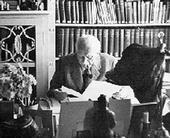
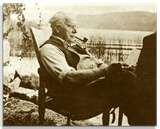
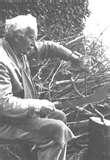
After a long lifetime dedicated to the understanding and healing of the human psyche, Jung died on June 6, 1961 in Kusnacht, Switzerland. His dreams at the end expressed grave concern for the well-being of the world, and also confirmed the achievement of a personal wholeness to which he was devoted during his entire life.
These short biographies of C.G. Jung appear on the Philemon Foundation's website and here by kind permission of Nancy Furlotti, Jungian Analyst and past president of the Philemon Foundation; a non-profit foundation devoted to bringing to publication the Complete Works of C. G. Jung including an additional, as yet unpublished, 30 volumes and 38,000 letters. For more information about the Philemon Foundation including publications, both recent and forthcoming, upcoming events and exhibitions, or inquires into how to support the foundation, please visit their website at www.philemonfoundation.org.


